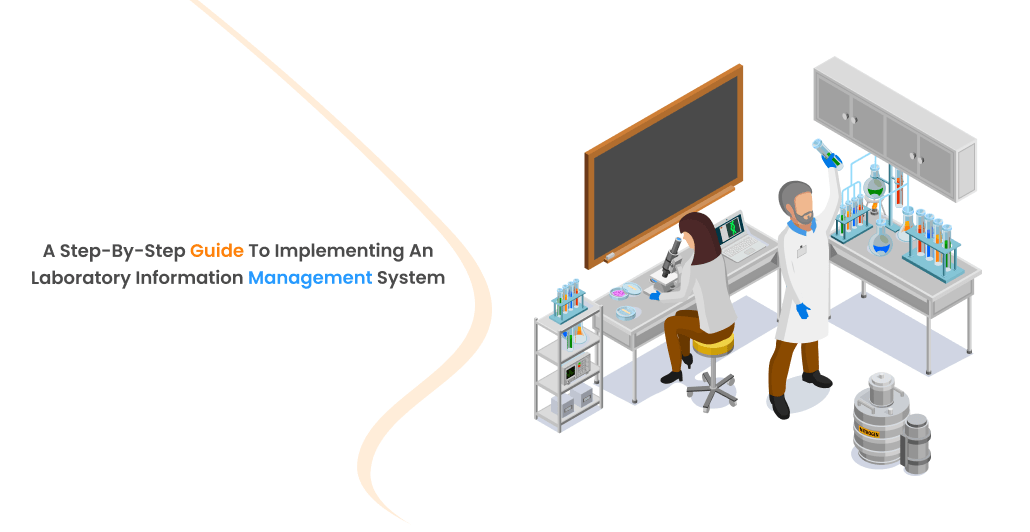Lab technicians have been playing crucial roles today whereby with the advancement of technology, laboratories are key to technological procedures. Data must be well collected and managed together with the operations of the laboratory to sustain the field. It is at this point that the benefits of a Laboratory Information Management System (LIMS) can be seen quite clearly. Irrespective of the size or nature of your lab, right from the pharmaceutical and pathology labs, a LIMS can go a long way in the efficiency and accuracy of the laboratories. Here we provide a step-by-step approach to how to implement a Laboratory Information Management System to explain the usefulness of the system and some of the areas where it can be utilized.
Understanding a Laboratory Information Management System
A LIMS or Laboratory Information Management System is a specific solution that is aimed at improving the management of the laboratory. This can be useful in the tracking of samples, collection, and storage of data, and assisting in compliance with regulating nuclear-related procedures. A LIMS can integrate various processes, minimize the occurrences of errors, and allow quick access to data that is valuable in making decisions.
Benefits of Laboratory Information Management System
Implementing a LIMS comes with a myriad of benefits: Implementing a LIMS comes with a myriad of benefits:
- Improved Data Management: A LIMS provides an organized data storage system that captures all the data that is generated in the laboratory allowing for easy tracking of information.
- Enhanced Efficiency: This leads to enhanced efficiency through the elimination of time-consuming manual processes, such as sample tracking, data entry, and report generation, which can become a burden to lab staff.
- Regulatory Compliance: LIMS is also useful in keeping with the various regulatory and statutory requirements, as records generated from LIMS are accurate and possess audit trails.
- Data Integrity and Security: Suspends any potential data corruption by limiting access to the data and maintaining records of all users.
- Better Decision Making: Accessibility to real-time data and choice of right reporting tools improve the decision-making process and its speed.
Step-by-Step Guide to Implementing a Laboratory Information Management System
Step 1: Assess Your Laboratory’s Needs
As you prepare to go out looking for a LIMS it is important to consider several factors that will enable you to determine the requirements for implementation of LIMS in your laboratory. Consider the following:
- Type of Laboratory: Is this a pharmaceutical lab a pathology lab a research lab or of a different kind?
- Volume of Samples: Assume the capacity of samples that your lab handles on a daily, weekly, or monthly basis.
- Regulatory Requirements: Determine any code of measures that your lab needs to implement as per local or international regulatory bodies.
- Current Workflow: Look at the existing processes to decide which of them should be optimized on how you work or perhaps which can be made computerized.
Step 2: Choose the Right LIMS
The decision on the type of LIMS Play In Healthcare to use will determine the whole process. When choosing the software for your laboratory, search for one that will effectively suit the needs of your institution. Consider the following factors:
- Scalability: Does the system have scalability potential, and can the system expand as your lab expands?
- Integration: Does it enhance compatibility with other systems and instruments that you have in place?
- User-Friendliness: Hello, I am a newbie in using personal organizers and am wondering if the one you are recommending is easy to use and therefore, easy to find your way around.
- Vendor Support: However, I would also want to know about the vendor support and training services that are to be availed by my company.
- Customization: Is it possible to modify the system according to
Step 3: Plan the Implementation
It is critical to achieve the right planning to get the right and overall implementation. Develop a comprehensive plan that includes: Develop a comprehensive plan that includes:
- Timeline: Obtain written commitments from key stakeholders to the project brief and realistic timelines for each phase of the implementation.
- Budget: Find out the costs of the software and the hardware, the cost of all training-related activities, and the expected costs of yearly support.
- Team: Some of the people who should be involved in the implementation process include; IT staff who will provide technical support, lab managers who will oversee the running of the labs as well as the end-users who will be directly affected by the change.
- Data Migration: As for the data involved in the new system, develop migration strategies for moving current data into the new system.
Step 4: Install and Configure the LIMS
Developing the overall strategy is the final step; implement and launch the LIMS, following the prepared plan. This involves:
- Hardware Setup: Preliminary checks are also important; make sure that all the equipment, including servers and workstations, has been acquired.
- Software Installation: For implementation of LIMS software, make sure that the software is installed as prescribed by the vendor.
- System Configuration: To better support your lab’s work, set the system parameters relatable to its operational procedures.
- User Access: When resolving an issue, it is effective to create user accounts and their permissions depending on their job description.
Step 5: Data Migration
One of the important tasks involves moving all the data from the previous LIMS into the newly implemented LIMS. Ensure that:
- Data Clean-Up: What is usually offered is the process of cleaning the data you may already have to eliminate any discrepancy.
- Data Mapping: Bring the structure of the new fields into the old fields.
- Testing: Perform some sample runs to observe whether data is correctly transferred over to a new operating system.
Step 6: Training and Support
Training The review identifies training as a crucial factor for LIMS implementation success. Provide comprehensive training to all users, including Provide comprehensive training to all users, including:
- Initial Training: Implement systems training to introduce the new system to the users and enable them to learn the new procedures.
- Ongoing Training: This includes providing continuous learning and feedback to meet the challenge and inform the client on enhancement.
- Documentation: Ensure that clear user guides are issued along with other forms of documentation for warranty and product information
Step 7: Go Live
Finally, when everything is ready stake will turn on the switch, and it’s live. Ensure that:
- System Testing: Continuing, the system should be tested rigorously to see that no problems exist.
- User Acceptance Testing: The program should enable end-users to use it and relay their experiences back to the developer or the project managers.
- Final Adjustments: Ausway, modify where needed based on feedback.
- Launch: Implement the LIMS formally which means to start using it practically in the functional aspects of the laboratory.
Step 8: Continuous Improvement
LIMS is not just a one-time solution; it involves an ongoing integrated approach. , and this means that all these aspects need to be embraced in a continuous improvement mentality to fully realize the potential outcomes. Regularly:
- Monitor Performance: Supervise the technical feeling and reporting of the system.
- Update Software: Ensure that the software being used is the most recent and contains the most recent updates and patches.
- Review Processes: Establish periodic checks for the processes that are followed in the laboratory and make improvements accordingly.
- Evaluate Vendor Support: Justify why the vendor should still be upkeep and provide thorough support and updates.
Laboratory Information Management System in Pharmacy
On the other hand, in the sphere of pharmaceuticals, it is an almost indispensable tool, known as LIMS. It assists in a voluminous data handling activity, maintaining its compliance with legal norms, and delivering better efficiency. Some of the advantages that could be accrued from implementing a LIMS include features such as tracking of samples, stability studies, and batch releases. It also improves the quality and accessibility of the data and records required, for example, for regulatory control and audits.
Laboratory Information Management System in Pathology Labs
The necessity of a LIMS in pathology labs can be very apparent since depending on the size and complexity of the facility, several aspects of their operations can be easily computerized such as sample registration, test ordering, results entry, and generating reports. An integrated Pathology Lab Software iin a LIMS leads to timely reporting, elimination of manual errors, and better rendezvous with doctors and patients. It also plays the role of interconnecting several departments and improving the circulation of work processes within the organization.
The Role of LIMS in Healthcare
LIMS is also known to play a critical role in the healthcare industry. They help to enhance the accuracy and reliability of laboratory information, which is important in diagnosing patient’s ailments and applying treatment. A LIMS expedites the time taken to complete the testing procedures hence fast medical decisions are made since the results are out sooner. It also incorporated the management of patient records, inventory for various laboratories, and monitoring of health care laws.
Conclusion
The adoption of LIMS is a significant leap for any lab and is one of the most important lab updates of this age. Following this guide will help you avoid mistakes and sandy the otherwise smooth operationalization process. From the discussion, it is evident that a LIMS has worthy returns through efficient data management, increased productivity, compliance to industry standards and policies, and informed decision making and therefore should be implemented in Pharmacy and pathology laboratories. Learn from the utility of a LIMS to enhance your laboratory activities so that you dominate the market in the current world of science and health care.











